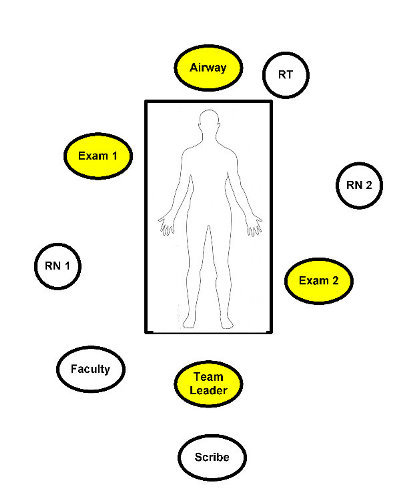What kind of credentialing should the members of your trauma team have?
The most important concept in answering this question is based purely on patient care. What shows that your personnel can provide the type of care that their position on the team warrants?
For all physicians, ATLS is a must. Verification agencies, including the American College of Surgeons, require that most providers to have passed the course once. I recommend a current ATLS provider certificate for all physicians, including residents. The course is updated every four years, which means that every time a provider certificate expires, new course content has been added. A current certificate keeps their knowledge up to date.
The airway physician should be either credentialed or have generous experience in managing the airway. This ensures that the intubation process is routine and safe when necessary.
Most, if not all physicians should be also current in ACLS, since major trauma patients may arrest prior to or after arrival at the hospital.
Nurses involved in trauma resuscitations should have additional credentialing such as TNCC. They should also be current in ACLS, and many hospital have added critical care experience and ongoing training requirements related to trauma.
For pediatric trauma programs, a basic pediatric resuscitation course such as PALS or APLS is mandatory. All physicians and nurses taking care of critically injured children should be current so they can provide the best care possible to them.
A piece of paper does not necessarily prove competence. The final part of the qualification process involves your trauma Performance Improvement program. All providers are scrutinized by the PI process, and if any stand out as having too many adverse events to their name, they should not be allowed to participate on the team.
The bottom line: Your trauma team members need to be great at what they do, with appropriate paperwork to prove it and PI monitoring to back it up. They need to be able to easily pass the “family member” test: would I want this person to take care of my (daughter) (husband) (grandmother) etc!

